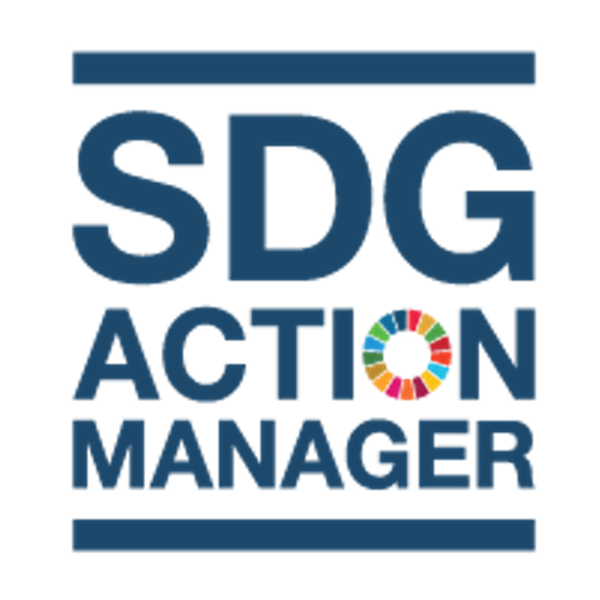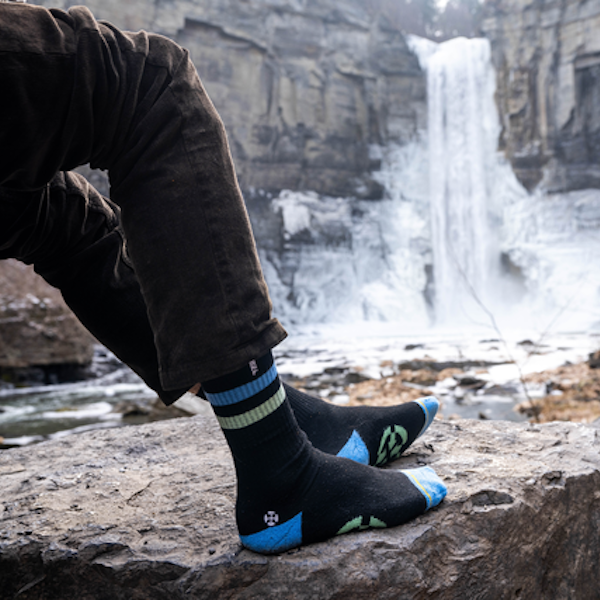Climate Action With Style: B Corps in the Ethical Fashion Industry Minimize Environmental Impact Through Healthy Supply Chains
April 21, 2021
How the UN Sustainable Development Goals Can Shape Better Business Practices and Drive Climate Action
The evolution of the fast fashion industry over the last few decades ushered in high styles at lower prices. It also created an environmental cost in the natural resources used in manufacturing and the landfill space taken up by discarded apparel, as well as the human cost for factory employees who put in long hours at low pay.
As retail brands cranked up speedy production of the latest looks, they also consumed growing amounts of water and created higher greenhouse gas emissions (GHG). But some ethical fashion companies are bucking those trends, taking climate action to reduce their water use and GHG while ensuring workers earn a living wage.
This stakeholder-oriented strategy includes a number of Certified B Corporations that are creating apparel made with the planet’s long-term health in mind. Many of these fashion businesses are pairing their practices with progress on the U.N. Sustainable Development Goals (or SDGs for short), which are a collection of 17 interconnected goals that serve as a blueprint to build a better world for people and our planet by 2030.
By aligning their operations with the SDGs, B Corps and other businesses — in the fashion industry and beyond — are reshaping their supply chains and taking climate action to build positive impact. To help companies identify where they can have the biggest impact and make progress on the SDGs, B Lab and the United Nations Global Compact developed a free online tool, the SDG Action Manager. Companies can use the SDG Action Manager to explore how each SDG interacts with their business model, internal operations, supply chain, potential for collective action, and risk of negative impact.
In honor of Earth Month 2021, B The Change talked with the leaders of three ethical fashion industry B Corps about the ways they incorporate the SDGs into their everyday practices to take positive climate action:
- Adila Cokar, of The Good Tee, an Ontario-based fashion company that focuses on three SDGs. For SDG 12: Responsible Consumption and Production, the B Corp aims for a transparent supply chain by partnering with suppliers who share a common vision of efficiency, openness, and transparency. Its Fair Trade certification addresses SDG 1: No Poverty, by promoting sustainable livelihoods for farmers and workers while protecting fragile ecosystems. For SDG 5: Gender Equality, Good Tee works Assisi Garments, a factory in India operated by Franciscan nuns and sisters to support their old age home and orphanage.
- Shamini Dhana, Founder of Dhana Inc., a California-based fashion technology company that currently focuses on eight SDGs. These include SDG 5: Gender Equality, as a woman-owned and women-led company that employs women from diverse groups and backgrounds; SDG 8: Decent Work and Economic Growth, and SDG 10: Reduced Inequalities, with its circular fashion collection custom made by a small apparel studio in Columbus, Ohio, that meets high standards for its work conditions: a safe environment, regular hours, and fair pay. For SDG 13: Climate Action, Dhana conducts Life Cycle Assessments on all products and has signed the NetZero 2030 commitment to reduce GHG by the end of this decade. And for SDG 12: Responsible Consumption and Production, Dhana reduces waste and pollution through repurposing, upcycling, and using take back programs to incentivize the consumer to be part of the solution.
- Michelle Sheldon, President of Eco Promotional Products Inc., which currently touches on 12 of the 17 SDGs through its work. The Illinois-based, woman-owned small business focuses on reducing waste through all of its product sourcing, not only apparel. As Sheldon says, “This comes with a lot of other benefits to help innovation, ensure sustainable consumption, promote healthy living and inclusivity, protect land and water, and try to combat climate change. Instead of adding SDGs, we are trying to be stronger and louder about the ones we already touch on. It’s a lot and there is so much work to be done.” Its focus includes SDG 2: Zero Hunger; SDG 5: Gender Equality; and SDG 8: Decent Work and Economic Growth.
These B Corps share more lessons and suggestions for businesses — apparel and otherwise — seeking more sustainable solutions and practices that reduce their impact on the environment and improve the welfare of the people in their communities.

SDG Action Manager
To support businesses pursuing the Sustainable Development Goals (SDGs), B Lab and the United Nations Global Compact along with content advisors developed the SDG Action Manager. This impact management solution enables businesses worldwide to set goals, track progress, and stay motivated on their actions toward the SDGs.
How has your B Corp aligned/shifted its business practices to advance progress on the SDGs? How has this affected your supply chain companies? Any adjustments to employee practices?
Michelle Sheldon: Back in 2015, a year before we became B Corp Certified, Eco Promotional Products Inc. began creating products for the UN promoting the SDGs. Since our inception in 2008, we have based our supply chain research around the UN Global Compact. With a turbulent political climate in recent years and B Corp bringing more awareness to the SDGs, we have since updated our vetting process.
We strive to investigate if and how our supply chain is helping to move the needle toward a more just future based around the SDGs and are creating our own score card for our supply chain. We’re partnering with suppliers with more transparency and those actively involved in vetting their process through the Fair Labor Association and other third-party verifiers.
Shamini Dhana: Dhana is empowering customers to value people (social) and planet (environment) every step of the way through the creation of their own fashion. The SDGs align with Dhana’s vision and ability to report and manage how we use business to “unite humanity through fashion.” In 2019 Dhana published the WearOurValues report, which looked at brand-customer value alignment in the fashion industry and found that 97% of the over 5,000 respondents demanded greater transparency in the fashion industry. That has prompted us to advocate for consumers and empower them to drive impact through the medium of fashion. Additionally, we showcase our supply chain partners and teams to honor their work and provide a connection to the hearts and hands behind each piece of garment created. Our employees are proud and, more than ever, empowered to be part of the solutions to climate change and social justice.

Adila Cokar: The Good Tee is only a year old, so we are still new and learning from partners to make improvements. As a B Corp we are grateful to learn so much about inclusivity, which also includes age. As a fashion brand we recognize that our elders do not have fair representation in the media and felt we could do better. We’ve started on our blog a #goodgen series where we interview inspirational seniors and to mitigate ageism. We are also adding more seniors to model our products. We are working toward increasing our size ranges also and as the company grows we can allocate budget to add larger sizes.

B Corp Gear to Help You Ease Into Ethical Fashion
While the burden to shop ethically shouldn’t be placed on the consumer, it can be empowering to know there are items made with people and the planet in mind. The Certified B Corporations in this guide offer ethical and sustainable options of essential items.
Why is it important for companies in the apparel industry to take the lead on sustainability and environmental protections?
Sheldon: This question highlights a lot of scary topics — unfair labor practices, worker safety, fair pay, discrimination, human trafficking, and so much more. Too many garment workers are forced to work unreasonable hours at ridiculously low wages; child labor is used and they are considered sweatshops. Cheap apparel comes at a huge human rights cost. Consume smarter; pay a bit more if you know it does not sacrifice the well-being of others to protect our people, planet, and profit.

Dhana: Every second the equivalent of a truck filled with clothing ends up in the garbage — over 70% of clothing in the almost $3 trillion fashion industry ends up in the landfill. This linear business model needs to move toward a circular and regenerative business model. Embracing circularity means valuing people and planet every step of the way. When customers co-create through circular fashion, we amplify how we as people have a choice to make an impact on social and environmental issues that we value.
People in Generation Z are demanding solutions to the current state of waste and pollution created by fashion as they are driving the resale of clothing industry ($24 billion market today), so fashion companies and brands need to adhere to the call of this growing customer base if they plan to be in business in the near future. This is demonstration of not only support for sustainability but also being transparent and accountable of the treatment of employees and workers in the supply chain they rely on. The brand’s identity is an extension of the social and environmental footprint they are impacting on a day-to-day basis. This is the real deal.
Cokar: The apparel industry is the second-largest polluter in the world next to oil and is extremely complex for industry newcomers to navigate. In addition, the 2013 manufacturing building collapse in Bangladesh put a huge stigma on offshore manufacturing. However, overseas manufacturing provides access to a wider range of resources to get the job done. These families and individuals in this industry have been doing this for generations and have a very special skill. Their jobs are not that easily replaced and people are counting on us to bring them work. Also, contrary to what people in North America hear, clothing can be made both sustainably and ethically.

How have your stakeholders (customers, employees, community) reacted to SDG-aligned work?
Sheldon: Our business model flourishes because we work with like-minded people, including our employees, customers, and community partners. It would be more beneficial to bring more awareness and education to those outside our network. It’s been a very challenging year, and I see great potential in creating change now more than ever. People are ready to listen and ready to see what they could not or did not want to see before. Now that our eyes are open, it’s time to make real change happen.
Any tips or suggestions for other businesses starting to incorporate the SDGs into their work?
Dhana: Spend time in understanding the “why” of your business value proposition and the connection of the product you offer to the impact you will create with your stakeholders. Once you understand this holistic approach to what you truly value, it will become easier and evident to articulate the SDGs that matter to your company.
Cokar: Take baby steps — this is a learning process. Take your time to understand your values and integrate them into your business.
Sign Up for our B The Change Newsletter
Read stories on the B Corp Movement and people using business as a force for good. The B The Change Newsletter is sent weekly on Fridays.